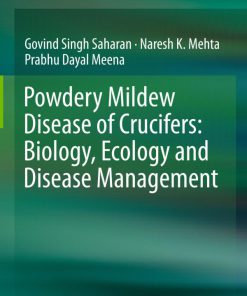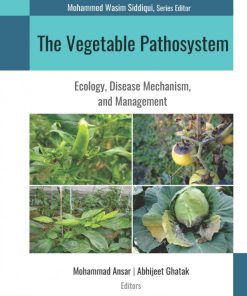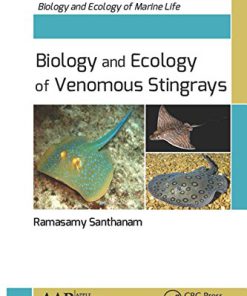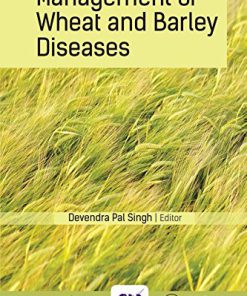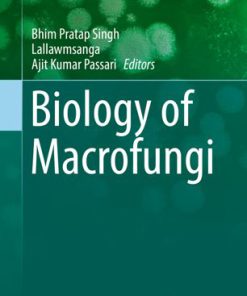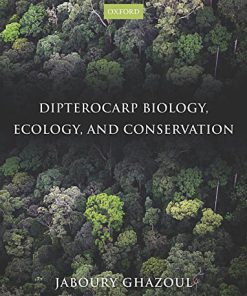Alternaria Diseases of Crucifers Biology Ecology and Disease Management 1st Edition by Gobind Singh Saharan, Naresh Mehta, Prabhu Dayal Meena ISBN 9811000212 9789811000218
$50.00 Original price was: $50.00.$25.00Current price is: $25.00.
Alternaria Diseases of Crucifers Biology, Ecology and Disease Management 1st Edition by Gobind Singh Saharan, Naresh Mehta, Prabhu Dayal Meena – Ebook PDF Instant Download/Delivery: 9811000212, 9789811000218
Full download Alternaria Diseases of Crucifers Biology, Ecology and Disease Management 1st Edition after payment

Product details:
ISBN 10: 9811000212
ISBN 13: 9789811000218
Author: Gobind Singh Saharan, Naresh Mehta, Prabhu Dayal Meena
This book deals with the various aspects viz., the disease, geographical distribution, symptoms on different hosts, host range, yield losses, and disease assessment method, while detailed description on pathogen include taxonomic position, phylogeny, variability, sporulation, perpetuation, and spore germination, host-parasite interactions in the form of seed infection, disease cycle, process of infection, and pathogenesis, epidemiology, forecasting, fine structures, biochemical changes, and phytotoxins, host defence mechanism, techniques to study host-parasite relationships, and management practices including cultural, chemical, biological control practices, and deployment of host resistance. The last section deals with gaps in our understanding, and knowledge about management of these diseases, techniques for the diagnosis of disease and offer suggestions for future research priorities. Each aspect has been vividly illustrated with photographs, histograms, figures, tables, electron micrographs for stimulating, effective and easy reading and understanding. We are sure that this comprehensive encyclopaedic treatise on “Alternaria diseases of crucifers” will be of immense use to the researchers, teachers, students and all others who are interested in the diagnosis and management of Alternaria diseases of crucifers world over. Four species of Alternaria are wide spread and most devastating on cruciferous oil yielding crops, vegetables, forage crops, ornamental plants, and numerous weeds all over the world. The damage to the plants is in the form of infections on seed in the soil during sowing, on seedlings during emergence and growth, on stem, leaves, inflorescence, pods and finally to the seed causing yield losses in seed quantity and quality.
Alternaria Diseases of Crucifers Biology, Ecology and Disease Management 1st Table of contents:
1: Introduction
1.1 Status of Genus Alternaria
1.2 Brassica Crops
1.3 The Disease
1.4 The Pathogen
1.5 Epidemiology and Forecasting
1.6 Pathogenic Variability
1.7 Fine Structures
1.8 Biochemistry
1.9 Resistance
1.10 Phytotoxins
1.11 Disease Management
1.12 Techniques
References
2: The Disease
2.1 Introduction
2.2 Synonyms
2.3 Symptomatology
2.3.1 Rapeseed–Mustard
2.3.2 Taramira (Eruca sativa)
2.3.3 Crambe (Crambe abyssinica)
2.3.4 Garden Stock (Matthiola incana)
2.3.5 Vegetable Crops (Cruciferous Vegetables)
2.3.6 Weeds
2.4 Geographical Distribution
2.5 Host Range
2.6 Yield Losses
2.6.1 Rapeseed–Mustard
2.6.2 Crambe
2.6.3 Vegetable Crops (Cruciferous Vegetables)
2.7 Disease Assessment Keys/Severity Charts
2.7.1 Visual Assessment Methods
2.7.1.1 Descriptive Keys
2.7.1.2 Standard Area Diagrams
2.7.2 Incidence–Severity Relationships
2.7.3 Inoculum–Disease Intensity Relationships
2.7.4 Remote Sensing Method
2.7.5 Video Image Analysis
2.7.6 Stress Tolerance Attributes
References
3: Pathogen
3.1 Introduction
3.2 Historical
3.3 Phylogeny
3.4 Taxonomy, Nomenclature and Morphology
3.4.1 Type species: Alternaria alternata (Fr.) Keissl
3.5 Classification
3.6 Morphology of Alternaria species Pathogenic on Cruciferous Crops
3.6.1 Type Species: Alternaria brassicicola (Schw.) Wiltshire
3.6.2 Type Species: Alternaria brassicae (Berk.) Sacc.
3.6.3 Type Species: Alternaria raphani Groves & Skolko
3.6.4 Type Species: Alternaria cheiranthi (Lib.) Bolle
3.7 The Infection Process
3.8 Identification of Alternaria Genes
3.9 Nuclear Ribosomal DNA Sequences
3.10 Identification, Cloning and Sequencing of Virulence Genes
3.11 Identification of Pathogenicity Factors
3.12 Growth and Sporulation
3.12.1 Culture Media
3.12.2 Temperature and Relative Humidity
3.12.3 Hydrogen Ion Concentrations (pH)
3.12.4 Light and Darkness
3.13 Perpetuation
3.14 Spore Germination
3.14.1 Effect of Culture Media
3.14.2 Effect of Temperature and Relative Humidity
3.14.3 Effect of Host Extract and Exudates
3.14.4 Effect of Light Intensity
3.15 Seed Infection
3.15.1 Location of Seed-Borne Infection
3.15.2 Disease Transmission in the Field
3.15.3 Effect of Seed Treatment
References
4: Infection Process, Pathogenesis and Disease Cycle
4.1 Introduction
4.2 Infection and Pathogenesis
4.3 Transcription Factors Associated with Pathogenesis
4.3.1 Melanin Biosynthesis and Virulence in A. brassicicola
4.3.2 Mutation of the Amr1 Gene Unexpectedly Causes Increased Virulence
4.4 The Cause of Increased Virulence in ∆amr1 Mutants
4.5 Evolution of Virulence in A. brassicicola
4.6 Identification of Pathogenicity Factors
4.7 Disease Cycle
References
5: Epidemiology and Forecasting
5.1 Introduction
5.2 Disease Development in Relation to Environmental Conditions
5.3 Disease Development in Relation to Nutrition and Cultural Conditions
5.4 Disease Development in Relation to Host Resistance
5.5 Disease Development in Relation to Flea Beetle
5.6 Disease Development in Relation to Barrier Crops
5.7 Models to Describe the Progress of the Disease
5.8 Disease Forecasting
References
6: Pathogenic Variability
6.1 Introduction
6.2 Historical Developments
6.3 Pathological Variations
6.4 Symptomatological Variations
6.5 Morphological and Cultural Variations
6.6 Genetic Variability
6.7 Molecular Techniques
6.8 Proteome Analysis
6.9 Nutritional Variability
6.10 Biochemical Variability
6.11 Fungicidal and Plant Extracts Sensitivity
6.12 Thermal Sensitivity
6.13 Identification and Nomenclature of Pathotypes
References
7: Fine Structures and Electron Microscopy
7.1 Introduction
7.2 Fine Structures and Electron Microscopy
References
8: Biochemistry of Host–Pathogen Interaction
8.1 Introduction
8.2 Biochemical Changes in the Host
8.3 Biochemical Changes in the Pathogen
8.4 Glucosinolates
8.5 Metabolites Produced
References
9: Resistance
9.1 Introduction
9.2 Genetics of Host–Parasite Interaction
9.2.1 Inheritance of Resistance
9.2.2 Disease Tolerance
9.2.3 Components of Horizontal Resistance
9.3 Morphological Resistance
9.4 Epicuticular Wax
9.5 Biochemical Basis of Resistance
9.6 Proteome-Level Resistance
9.7 Induced Resistance
9.8 Identification, Cloning and Sequencing of Resistant Genes
9.9 Elicitation of Phytoalexins
9.10 Calcium Sequestration
9.11 Sources of Resistance
9.11.1 Sources of Resistance from Cruciferous Relatives
9.12 Sources of Multiple Disease Resistance
9.13 Relationship between Major Foliar Diseases
9.14 Development of Resistant Cultivars
9.15 Strategies and Methods of Screening for Resistance
9.16 Bottlenecks in Resistance Breeding
9.17 Biotechnological Approaches
9.17.1 In Vitro Embryo Rescue
9.17.2 Somatic Hybridization
9.17.3 Somaclonal Variations
9.17.4 Genetic Transformation
9.17.5 Molecular Markers
9.17.6 Induction of Systemic Resistance
9.17.7 Genetic Engineering
9.18 Factors Affecting Plant Disease Resistance
9.19 Accessing and Exploiting Genetic Diversity
References
10: Phytotoxins
10.1 Introduction
10.2 Historical Developments
10.3 Metabolites from Alternaria
10.3.1 Classification and Occurrence
10.4 Effect on Plants at Physiological, Biochemical and Molecular Level
10.4.1 Physiological Level
10.4.2 Biochemical Level
10.4.3 Molecular Level
10.5 Role of Toxins in the Infection Process
10.6 Toxin Biosynthesis
10.7 Mode of Action of Host-Specific Toxins
10.8 Role of Toxin in Host Defence against Alternaria species
10.9 In Silico Protein–Protein Interaction
References
11: Disease Management
11.1 Introduction
11.2 Cultural Measures
11.3 Seed Treatment
11.3.1 Hot Water Treatment
11.3.2 Chemical Treatment
11.3.3 Bioagent Treatment
11.4 Chemical Control
11.4.1 Effect of Fungicides on Host Growth
11.5 Biological Control
11.5.1 Plant Extracts as Fungitoxicants
11.5.2 Antagonists for Biocontrol
11.5.3 Mechanisms of Biocontrol
11.5.4 Biological Control vs. Biochemical Changes
11.6 Host Resistance
11.7 Fungicidal Resistance
11.8 Integrated Disease Management
References
12: Techniques
12.1 Introduction
12.2 Stem Explant Culture Inoculation
12.3 Leaf Disc Inoculation
12.4 Detached Leaf and Pod Inoculation
12.5 Detached Leaf Inoculation
12.6 Greenhouse Method for Testing Resistance
12.7 Brassica Germ-Plasm Screening for Resistance through AB Toxin
12.8 Semi-Selective Medium for Detecting Seed-Borne A. brassicicola
12.9 Radish Root Extract Agar for A. brassicae Sporulation
12.10 Inducing Sporulation of A. brassicae
12.11 Brassica Callus Culture to Induce Sporulation in Alternaria brassicae
12.12 Method of Estimating Alternaria brassicicola in Seed
12.13 Identification of Fungicide Antagonists in Leaf Exudates
12.14 Ovary and Ovule Culture
12.15 Method for Evaluating Partial Resistance to Alternaria brassicicola
12.16 Tissue Culture
12.17 Inoculation Methods for Pathogenesis of Alternaria brassicae
12.18 PCR-Based Assay for Detecting Alternaria brassicae in Cruciferous Seed
12.18.1 Preparation of Seed Samples
12.18.2 DNA Manipulation
12.18.3 PCR-Based Assay
12.19 Quantitative Inoculation Method
12.20 Assessment of Methods of Inoculation for Resistance to Alternaria
12.20.1 Method of Inoculation
12.20.2 Detached True Leaf Inoculation
12.20.3 Infection Score and Disease Index
12.21 Image-Based Disease Identification
12.22 ELISA Diagnostic Kits
12.23 Direct Tissue Blotting
12.24 Nucleic Acid Probes
12.24.1 Squash Blot Method
12.24.2 Polymerase Chain Reaction (PCR)
12.24.3 DNA Microarray Technology
References
13: Future Strategies and Priorities for the Management of Alternaria Diseases of Crucifers
13.1 Disease Epidemiology and Forecasting
13.2 Physiological Specialization
13.3 Genetics of Resistance
13.4 Genetics of Virulence
13.5 Exploitation of Morphological, Structural and Biochemical Basis of Resistance
13.6 Comparative Studies on All Aspects of Host–Parasite Interaction
13.7 Phytotoxins
13.8 Genome Sequencing
13.9 Disease Control Strategy
13.10 Integrated Management
People also search for Alternaria Diseases of Crucifers Biology, Ecology and Disease Management 1st:
alternaria diseases of crucifers biology ecology disease management
alternaria diseases of crucifers biology ecology and disease management
Tags:
Gobind Singh Saharan,Naresh Mehta,Prabhu Dayal Meena,Alternaria Diseases,Crucifers Biology,Ecology,Disease Management
You may also like…
Science (General)
Biology and other natural sciences
Coexistence : the ecology and evolution of tropical biology 1st Edition Sapp
Biology and other natural sciences
Biology and Ecology of Venomous Stingrays 1st Edition Ramasamy Santhanam
Biology and other natural sciences - Biology
Science (General)
Dipterocarp biology ecology and conservation 1st Edition Ghazoul
Science (General)
Biology and Ecology of Toxic Pufferfish First Edition Santhanam




